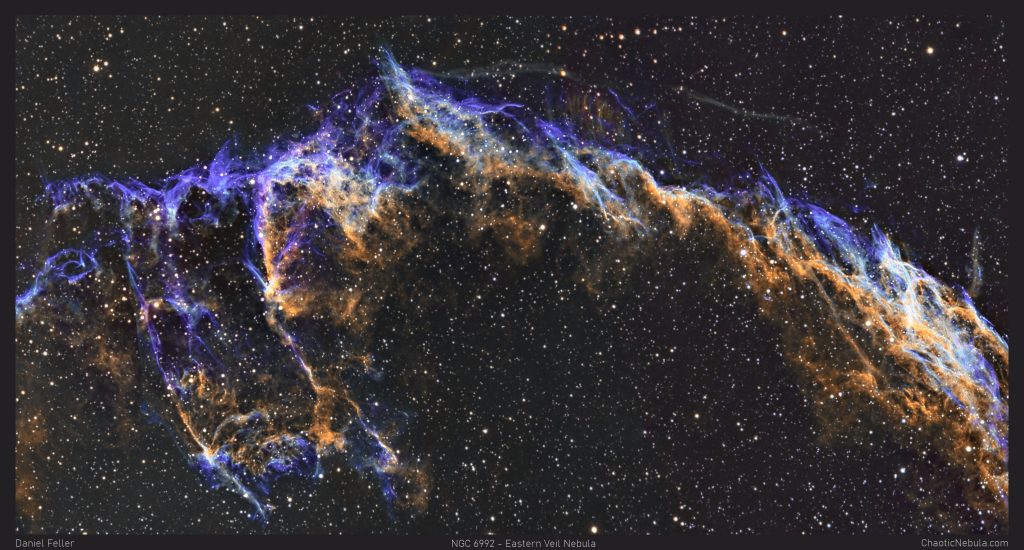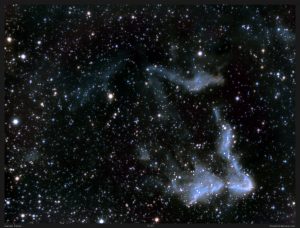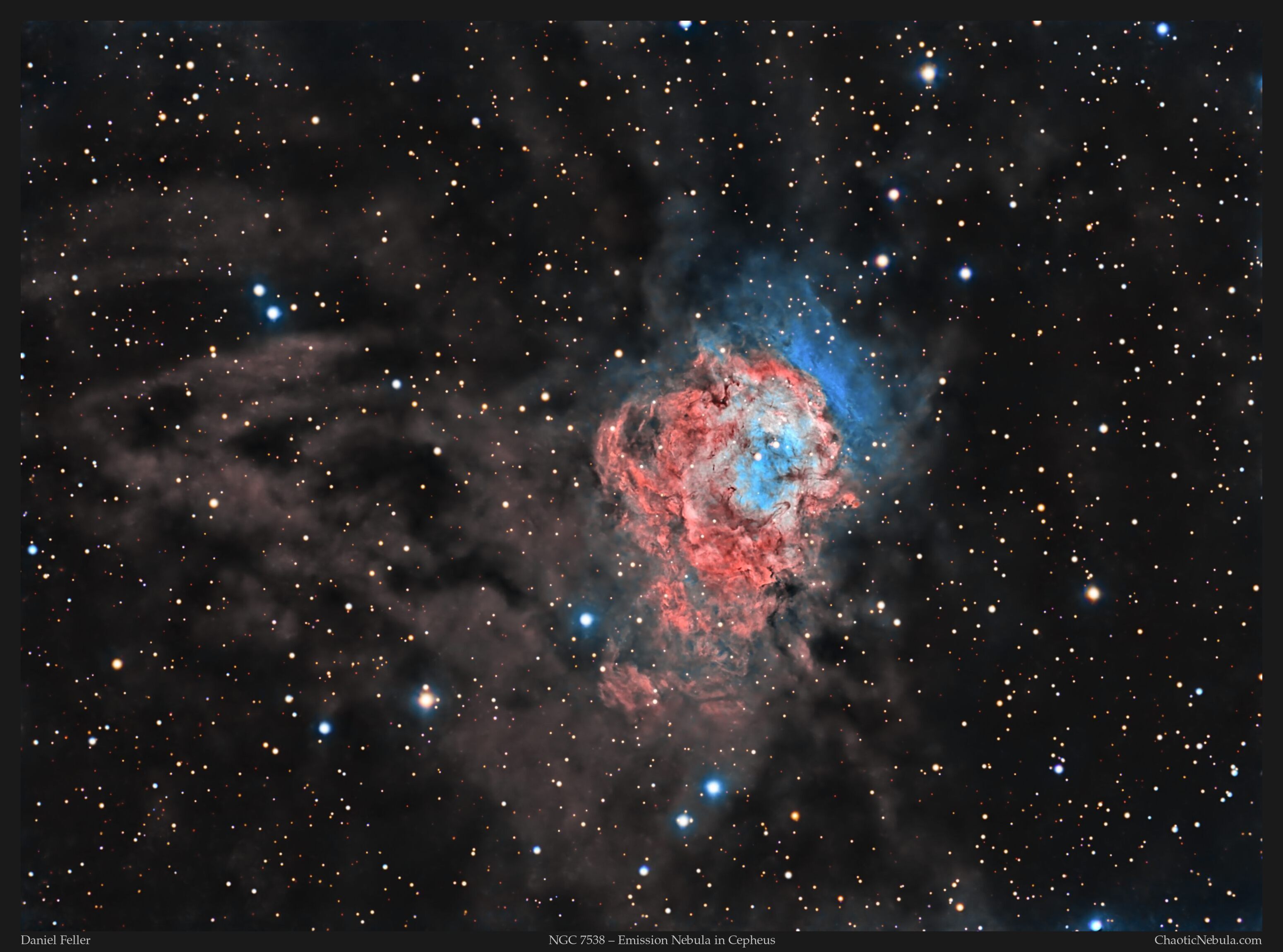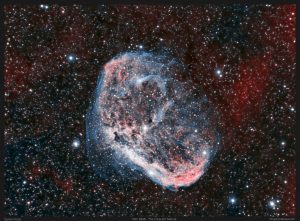NGC 6992 is the eastern portion of the Cygnus Loop, which is a supernova remnant (exploding star) roughly 2,400 light years away in the constellation Cygnus. The originating star, which was 20 times more massive than the sun, exploded 10,000 to 20,000 years ago leaving behind the Veil Nebula.
Imaging Details
- Processing Workflow: Narrowband
- 3-Panel Mosaic
- Hydrogen-alpha: 20*600 seconds (per mosaic panel)
- Oxygen-III: 15*600 seconds(per mosaic panel)
- Sulfur-II: 20*600 seconds(per mosaic panel)
- Total Imaging Time: 27.5hrs
- Imaging Dates (8 nights):
- 5/30/2020
- 6/02/2020
- 7/13/2020
- 7/15/2020
- 7/19/2020
- 7/27/2020
- 7/29/2020
- 7/30/2020
High-Level Workflow
This is the first mosaic I’ve done since I created the M42 – Orion Nebula image. That particular image was created with a DSLR camera and no filters in a 3×3 mosaic.
The Eastern Veil Nebula mosaic would only be a 1×3, but each mosaic panel would get imaged through 3 different narrowband filters to help bring out the details and overcome the local light pollution.
Overall, the development of the final image used a SHO workflow where the Sulfur filter gets mapped to the red channel, Hydrogen to green and Oxygen to blue. You can see how a single image (using the hydrogen alpha filter), transformed into the final image when working through the entire process.
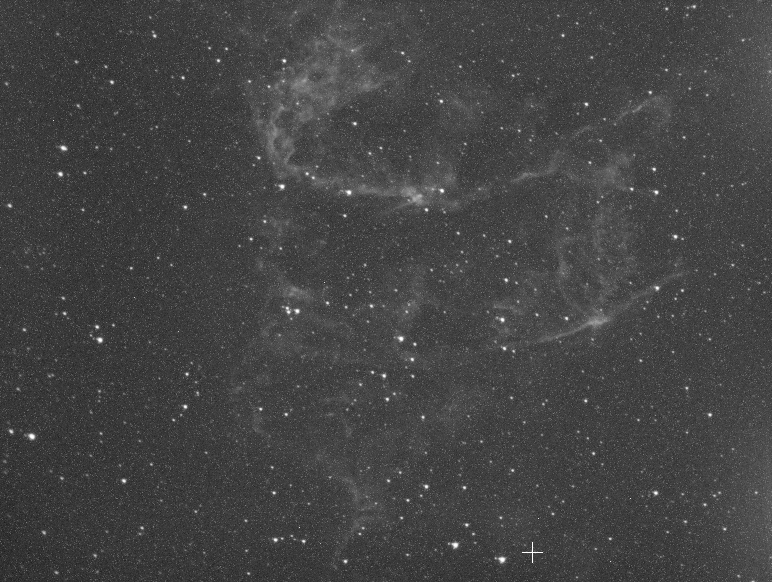
(first panel)

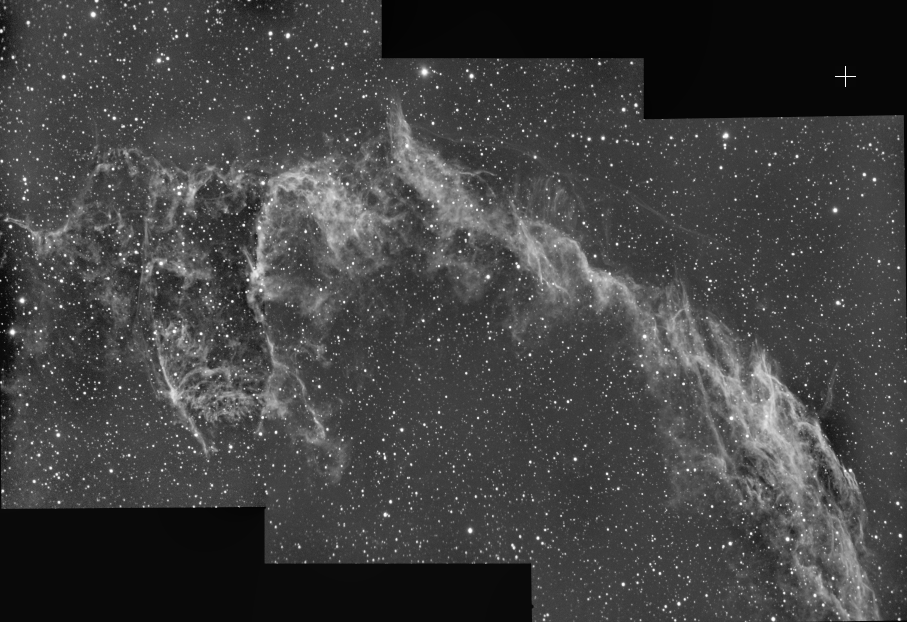
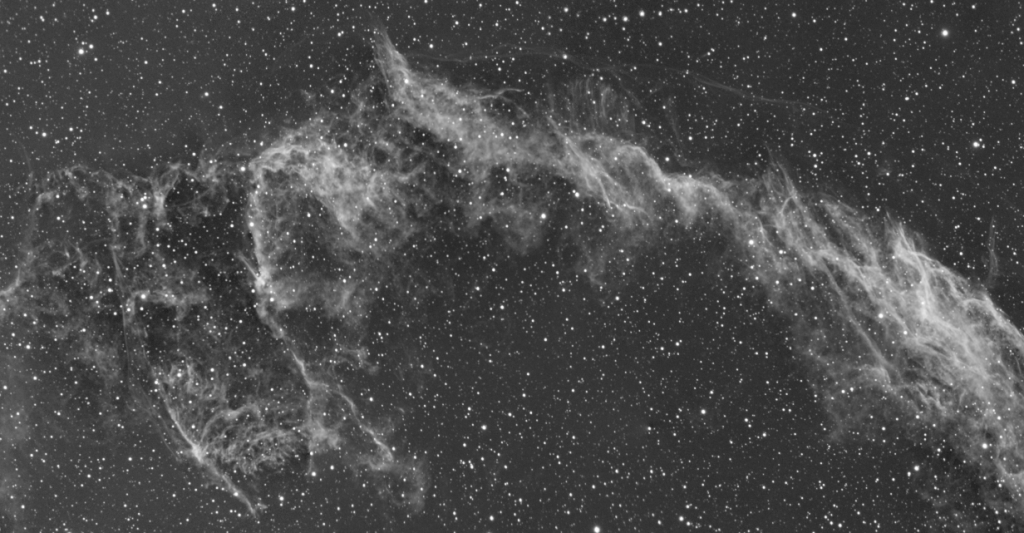
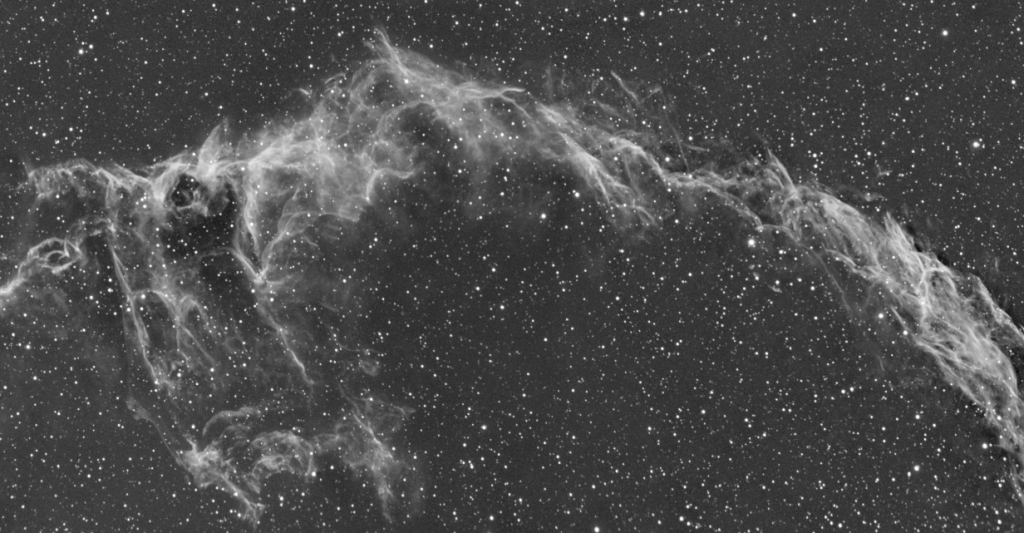
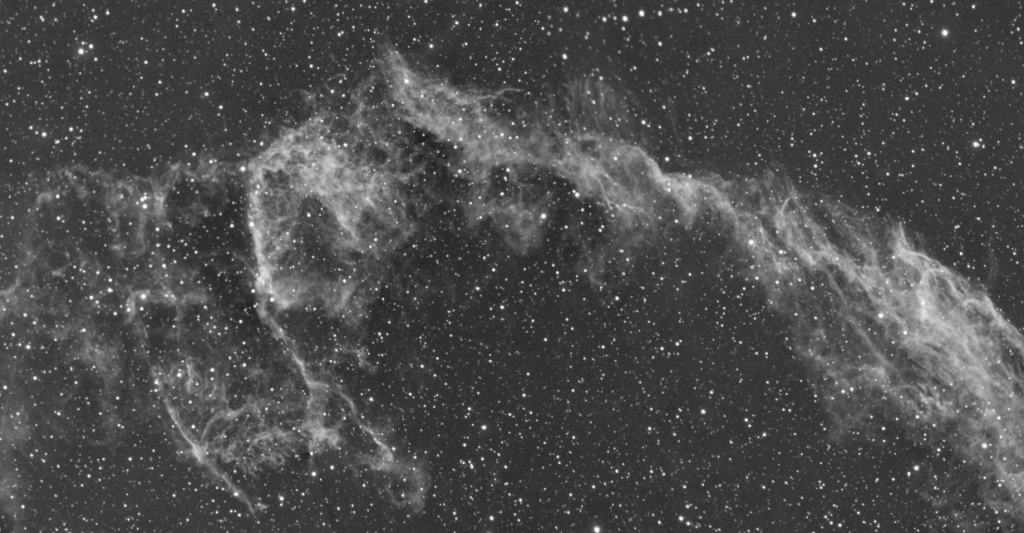
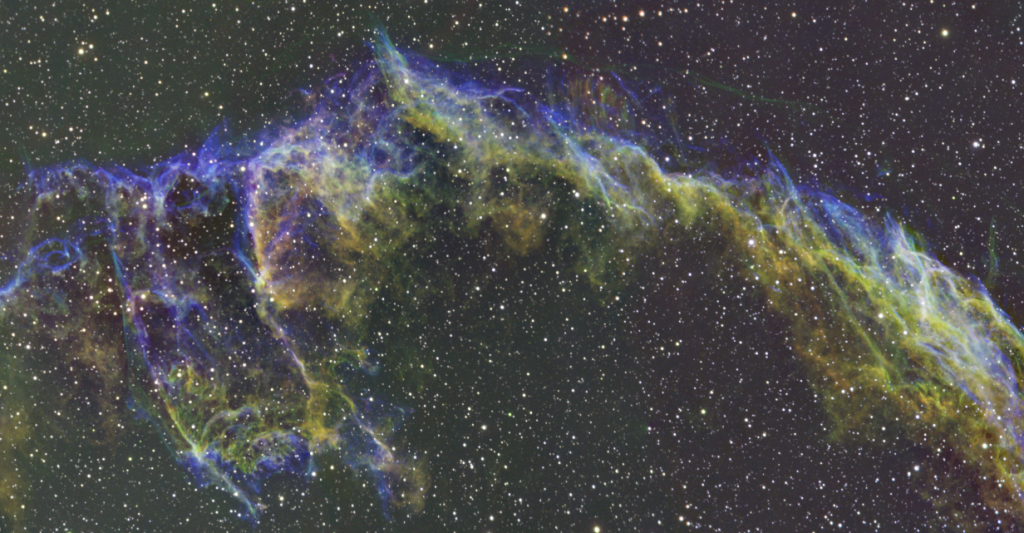
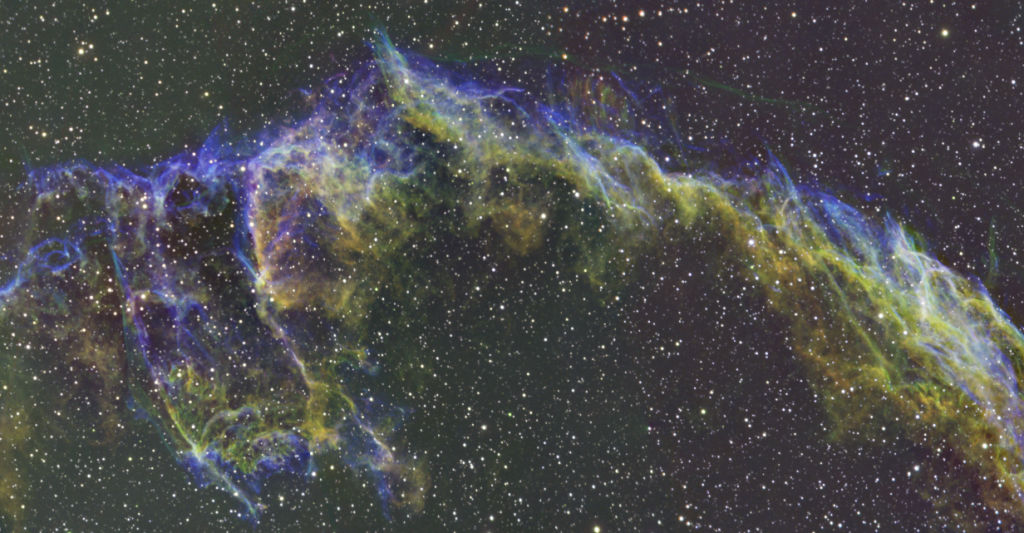

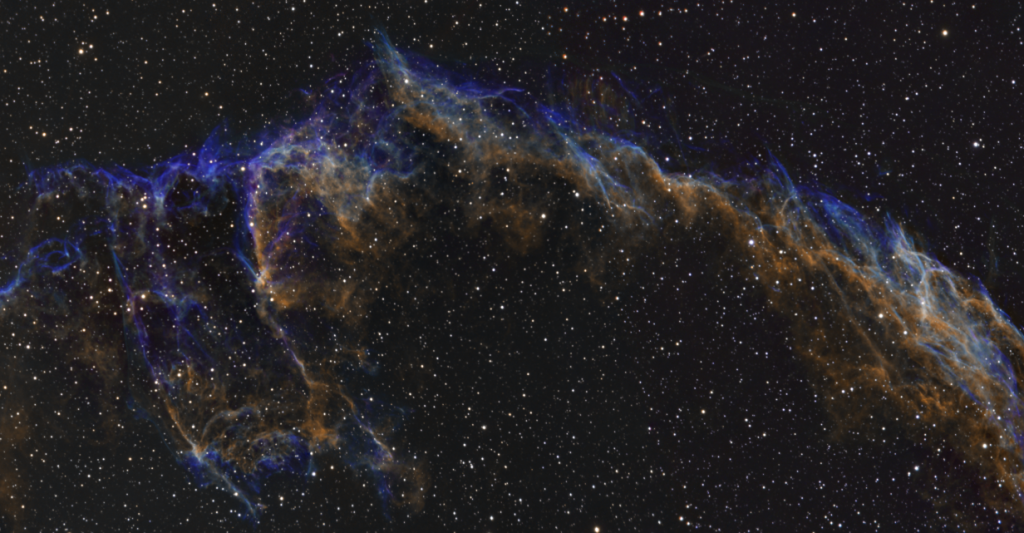
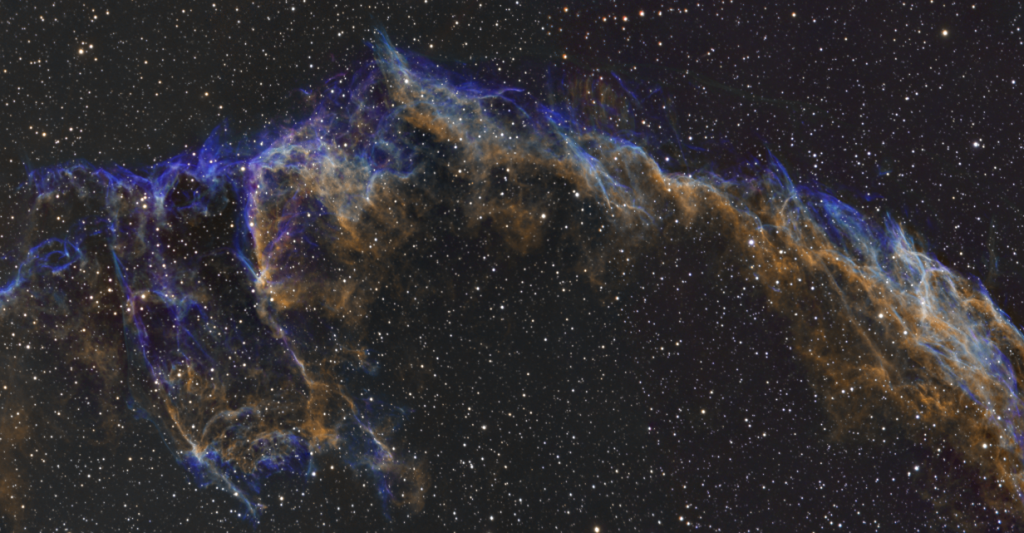

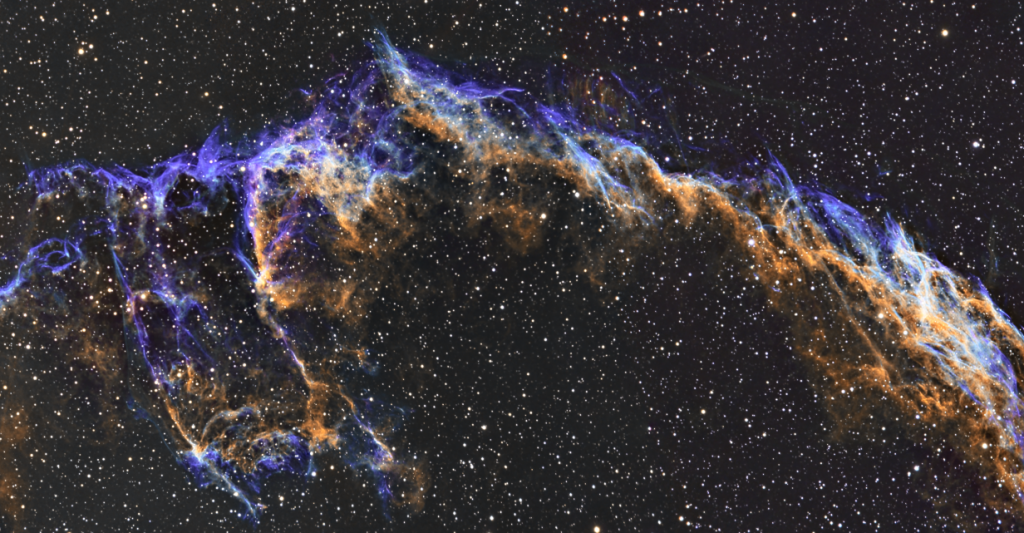

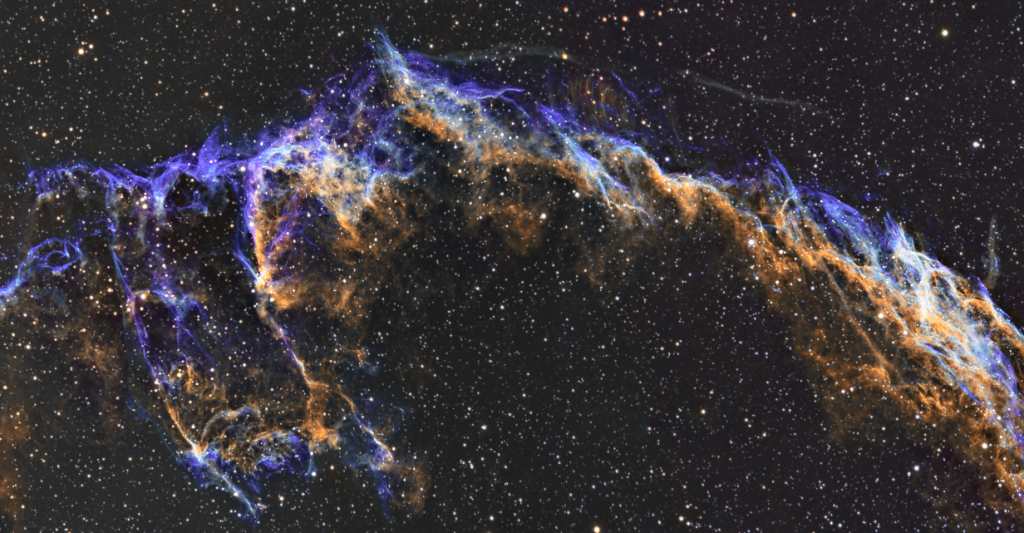
The mosaic image is 3GB in size. This large size means that each PixInsight process takes a lot of time and a lot of hard drive space. It took about a week (4-5 hours per day) to get to a completed image.
Overall, I’m quite pleased with how well this particular image turned out. Using a telescope with such a small field of view provides some interesting details, but to capture some of these larger objects, it takes a significant amount of telescope and computer time.
If I wanted to use my current imaging setup to capture the entire Cygnus Loop, it would be a 7X9 panel mosaic, which is 63 different frames. I can’t even image how large the final file size would be and how long it would take to process.
